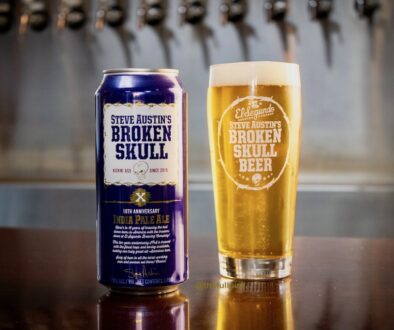Is This Clear Enough for You?
 Clarity. It’s a wonderful thing. It can allow one to see the big picture, it can stop arguments, end confusion… and it can even make beer more appealing. OK, different clarity but to us it’s just as edifying. We’re obviously talking about clear – not hazy – beer. To us clarity is a constant battle and something we’re always trying to improve upon because we feel haziness/cloudiness/turbidity is something that takes away from the enjoyment of having a beer.
Clarity. It’s a wonderful thing. It can allow one to see the big picture, it can stop arguments, end confusion… and it can even make beer more appealing. OK, different clarity but to us it’s just as edifying. We’re obviously talking about clear – not hazy – beer. To us clarity is a constant battle and something we’re always trying to improve upon because we feel haziness/cloudiness/turbidity is something that takes away from the enjoyment of having a beer.
And we really do have beer. People don’t simply swallow beer. In addition to tasting it, we smell it, feel its coolness and body and, of course, we see it (we don’t really hear it, that’s reserved for the ball game or the concert or the sounds of the friends with whom we have it).

Now, we do believe some people actually prefer hazy beer. These people think it somehow tastes better or it’s more authentic. That’s fine, to each his own. Being traditionalists, though, this cloudy beer phenomenon is a new development. If you study English and European brewing history back to the introduction of clear glass drinking vessels, it has been every brewer’s desire to present clear beer to this day.
OK, let’s clarify clarity (he he). We’re not talking about beers that are meant to be cloudy like Hefe-weizens and wit beers; they get a pass. Their cloudiness comes from the distinctive yeast that provides much of their flavor and is a marker of the style. We’re also not necessarily talking about something called chill-haze, which happens when beer is chilled to too cold of a temperature. You’ll know it is chill-haze if it goes away as it warms up. But even chill-haze is annoying to us because if we’re worth a damn as brewers then we can eliminate this too – which leads us back to laziness. Achieving clarity is not easy but it is essential and we worry when we are served beers in other establishments that should, and, frankly, could be clear. We’re concerned about what else a brewery is skipping.Clarifying beer is not a perfect science but we will continue to try because it’s important to us – and not because of what is removed, but because of what is added.
What is removed when beer is clarified? Yeast mainly, which can change the flavor of beer over time especially if it lyses, or starts metabolizing itself. Protein is also removed during clarification; too much protein can limit the flavor and shelf life of beer. So, what’s added to beer by removing these things? This is harder to pin down but it’s best answered as, well, beauty. There is something special and visually striking in the way light gets dispersed through a glass of beer (we’re beer geeks, remember). This can only happen when beer is clear, with one notable exception: stout. But even cloudy stout hinders what can be truly beautiful blackness.
Have we ever kegged or bottled cloudy or hazy beer? We can answer that by saying that we have sent beer out to the trade that has been at the threshold of our standards, especially beers like Hop Knot that we dry hop. Dry hopping creates a special problem because when dry hopping beers you are adding different types of haze-forming components, ones that can defy filtration. We’ve also sent beer out that by all eyes is totally clear but that later, with age, forms a haze. Like we said, it’s a constant battle.
So, you see, clarity, like the beer foam that we mentioned in an earlier blog, has to do with being a good brewer – which to us means instilling quality through difficult processes and ensuring a satisfying sensory experience for the customer that includes not only taste, but other senses as well.
Learn some German!




July 9, 2008 @ 8:14 pm
Keep in mind, Four Peaks wrote this, not thefullpint.com .
July 9, 2008 @ 11:09 am
It’s obvious you don’t know much about beer. That’s OK, but don’t try to pass on that unfiltered beers are a “new fad” or “lazy brewing”. That is insane. It is more natural. You say not, yet you also say to add “fining agents” to the beer. Ridiculous.